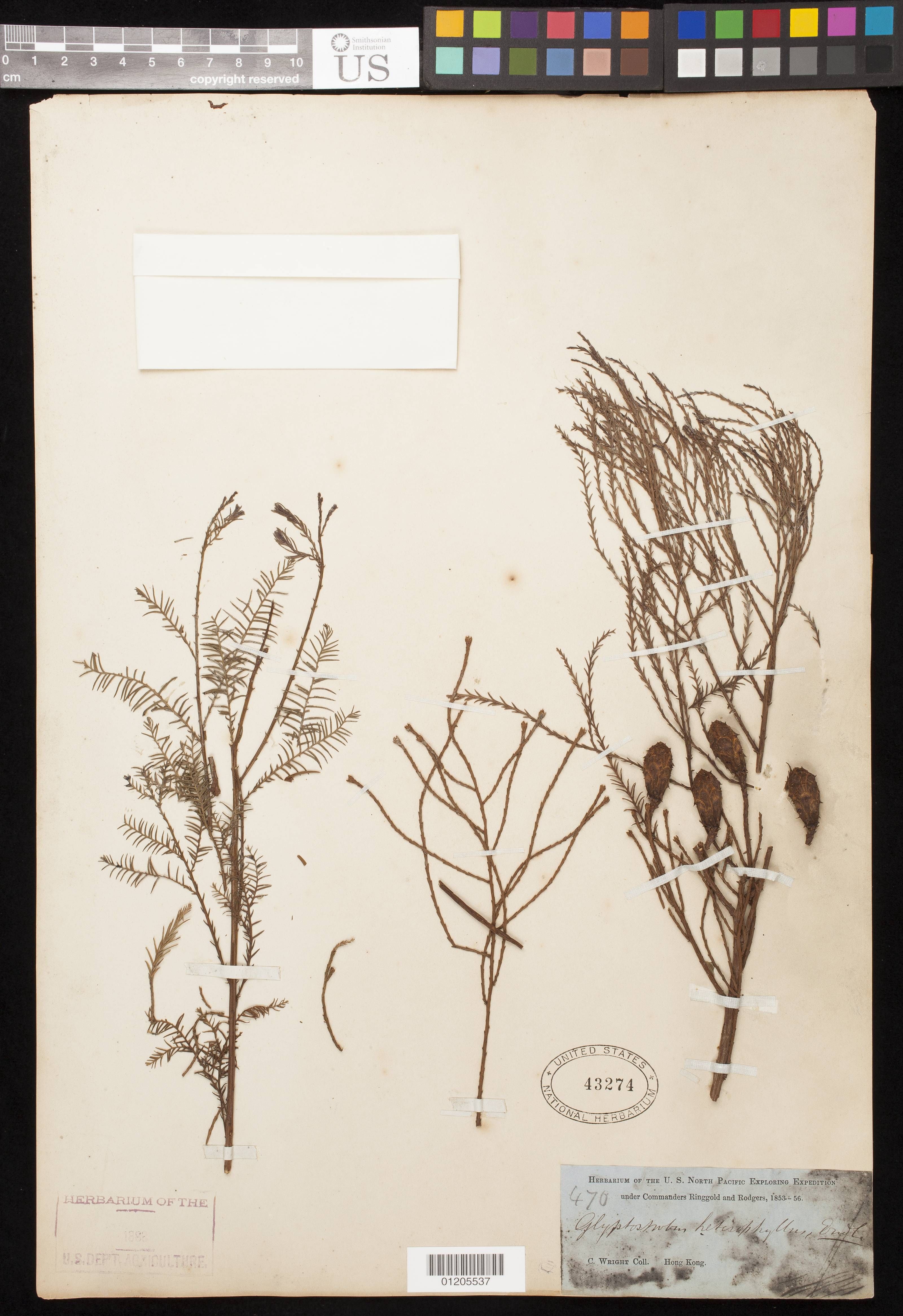| Citation |
|
Description |
Geographic Range [top]
Range Description: This species is found in SE China: Fujian, S Hunan, Guangdong, Guangxi, Jiangxi (it is suggested that most if not all of these supposed occurrences are cultivated plants (Li and Xia 2004, 2005) – there are more than 200,000 mature individuals known in cultivation); introduced on Hainan Island and in Sichuan, possibly natural in SE Yunnan (but this too is disputed). This species is known from nine small localities in Dac Lac province in in Viet Nam (Averyanov 2009). These represent two locations sensu IUCN. Recently several small stands were discovered in Khammouan Province, Lao PDR (Thomas and LePage 2011) - these are considered to represent one location sensu IUCN.
Countries occurrence:
Native:
China (Fujian - Present - Origin Uncertain, Guangdong - Present - Origin Uncertain, Guangxi - Present - Origin Uncertain, Hainan - Present - Origin Uncertain, Jiangxi - Present - Origin Uncertain, Sichuan - Present - Origin Uncertain, Yunnan - Present - Origin Uncertain); Lao Peoples Democratic Republic; Viet Nam
Additional data:
? Estimated area of occupancy (AOO) - km2: 12 ? Continuing decline in area of occupancy (AOO): Yes
? Extreme fluctuations in area of occupancy (AOO): No ? Estimated extent of occurrence (EOO) - km2:
? Continuing decline in extent of occurrence (EOO): Yes
? Number of Locations: 3
? Lower elevation limit (metres): 500
? Upper elevation limit (metres): 700
Range Map: Click here to open the map viewer and explore range.
Population [top]
Population:
No wild plants are known to remain in China, although hope remains that a few individuals may still survive.
In Viet Nam fewer than 300 trees occur in five localities. Three of these localities have less than 10 trees each. The main stands are located within Earal and Trap Kso nature reserves. No viable seed has been collected from these trees over the last 20 years (Averyanov et al. 2009)
In Lao PDR six stands were recently located during surveys of the Nakai plateau. The largest of these was inundated at the completion of the Nam Theun II hydroscheme. The total number of trees remaining is estimated to be less than 100 (Thomas and LePage 2011).
Although the total number of trees is more than 250, very few have been known to produce viable seed or to reproduce vegetatively. Within the context of the IUCN definitions, the number of mature individuals is less than 250.
Current Population Trend: Decreasing
Additional data:
? Number of mature individuals: 100-249 ? Continuing decline of mature individuals: Yes
? Extreme fluctuations: No ? Population severely fragmented: Yes
? Continuing decline in subpopulations: Yes
? All individuals in one subpopulation: No
Habitat and Ecology [top]
Habitat and Ecology: A heliophilous species, intolerant of competition and usually growing in pure stands or solitary along streams. In China it is mainly found on river floodplains and in deltas, always near or in water, where it develops a buttressed base and occasionally pneumatophores; also extensively planted along rivers and canals. In Viet Nam and Lao PDR it occurs along streams and in seasonally inundated areas at altitudes between 500 and 700 m asl.
Systems: Terrestrial
Continuing decline in area, extent and/or quality of habitat: Yes
Generation Length (years): 50
Use and Trade [top]
Use and Trade: The rather soft, yellowish wood is like most cupressaceous wood decay resistant and finds uses in China ranging from furniture to building of bridges. The wood of the roots is very light and due to its buoyancy it is used in China to make life-saving rings. This species is widely cultivated in southern China and planted along rivers and canals as well as in parks; except for the latter localities mostly to harvest the timber followed by replanting. In Viet Nam wood is highly valued for crafts and is reputed to have anti-cancer properties although there is no scientific evidence to support this.
Threats [top]
Major Threat(s):
In China and Viet Nam habitat loss due to intensive agriculture has been the main cause of decline. The subpopulations in Viet Nam are within coffee plantations, the water table has been altered and the trees are no longer producing fertile seed. Illegal logging of live and dead trees within the nature reserves has recently been reported.
The largest of the recently discovered stands in Lao PDR were located within the inundation zone of the newly completed Nam Theun II hydroscheme and have been flooded. Several small stands are located outside of this zone on land that has been allocated to villages for forestry or agriculture, and each stand has been impacted to various degrees by logging, construction of fish ponds, and clearing for food crops (Thomas and LePage 2011)
Conservation Actions [top]
Conservation Actions: Surveys are required of all potential areas of suitable habitat in China to see if any wild plants still remain. The subpopulations in southern Viet Nam and Lao PDR should receive urgent site protection and restoration efforts are required to increase the size and viability of these subpopulations. If that is not done this species could well become Critically Endangered (Possibly Extinct in the Wild).
Citation: Thomas, P., Yang, Y., Farjon, A., Nguyen, D. & Liao, W. 2011. Glyptostrobus pensilis. The IUCN Red List of Threatened Species 2011: e.T32312A9695181. http://dx.doi.org/10.2305/IUCN.UK.2011-2.RLTS.T32312A9695181.en. Downloaded on 09 January 2018.
Disclaimer: To make use of this information, please check the .
Feedback: If you see any errors or have any questions or suggestions on what is shown on this page, please provide us with feedback so that we can correct or extend the information provided
|


